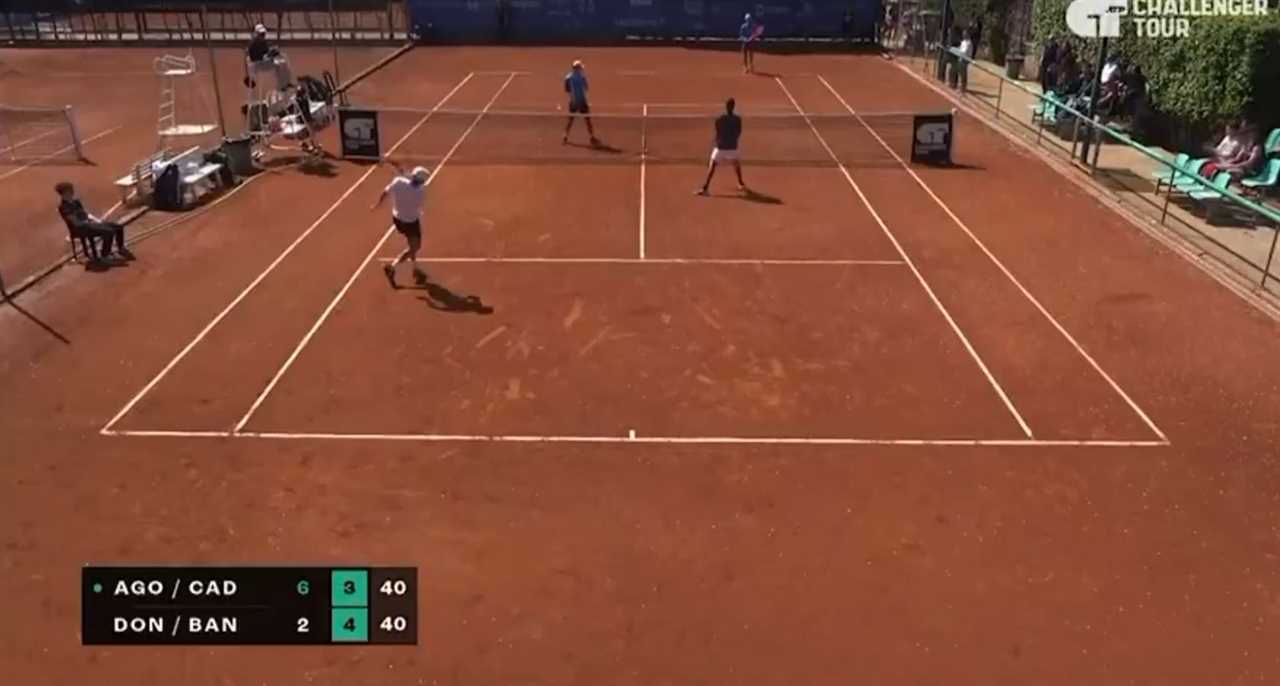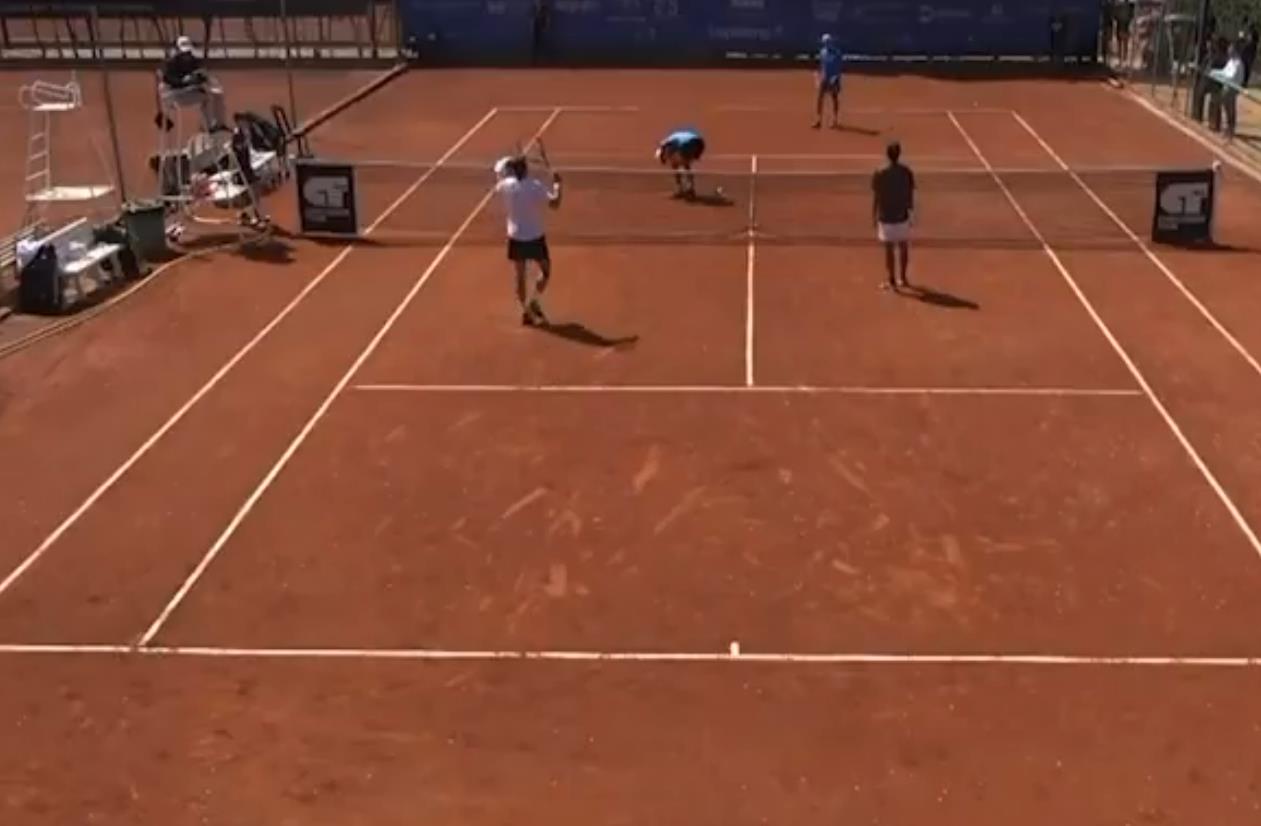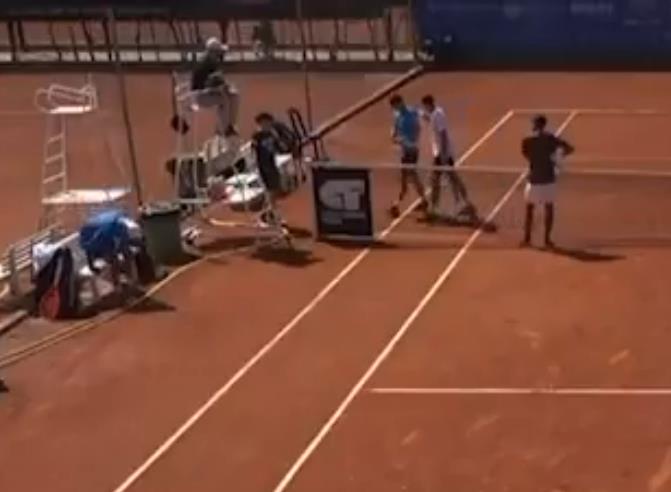
Jesus Christ. I just watched the most appalling display of sportsmanship I've seen in years. And I've been covering tennis since 2011, so that's saying something.
Let me set the scene for you. It's a quarter-final doubles match at this ATP Challenger tournament in Barletta, Italy. Not exactly Wimbledon, but still professional tennis with ranking points and careers on the line. Alexander Donski (playing with Siddhant Banthia) just lost a crucial point to the Italian duo Cadenasso and Agostini. The Italians tied things up at 4-4 in the second set after dropping a sweet drop volley that Donski couldn't reach.
And then... complete madness.
Audio Summary of the Article
When Frustration Turns Dangerous
Donski – clearly pissed about losing the point – decides to whack the ball in anger. We've all seen players do this. Usually they blast it into the back fence or up into the stands. But no. This idiot smashes it directly across the net and DRILLS Agostini right in the head. Not a glancing blow. Not a slow roll. A full-speed projectile that could've caused serious damage.

I was watching teh replay with my colleague (who played college tennis) and his immediate reaction: "That's assault with a tennis ball."
Look, I get it. Tennis is frustrating as hell. I once threw my own racquet during a club match back in 2018 and nearly hit some poor kid. Cost me $75 in club fines and endless embarrassment. But I'm an amateur hack, not a professional athlete.
Why Just a Disqualification Feels Inadequate
The officials did what they had to do – immediately defaulted Donski and Banthia. That means no prize money, no ranking points. But many fans (myself included) are wondering if that's enough.
This wasn't an accident.

The ball didn't inadvertently fly off in the wrong direction during normal play. This was a deliberate act of hitting a ball in anger that endangered another player. The fact that Donski immediately apologized shows he knew exactly what he'd done.
I texted my editor about this incident and asked if we should be talking about suspension. His response: "100%. If this happened in any other sport, we'd be talking weeks not days."
The Ugly Pattern Nobody Wants to Address
Tennis has a problem with on-court behavior that's been festering for years. Remember when Djokovic accidentally hit that line judge at the 2020 US Open? Or Shapovalov smacking the chair umpire with a ball back in 2017? Both accidents, both resulted in defaults.
But dammit, the pattern continues because the punishment doesn't seem to be deterring anyone.
One fan on social media summed it up perfectly: "I feel like disqualifying is kind. They need to start giving some suspensions because it's stillllll happeningggg. Dude could easily have concussion or internal bleeding. That was f***ing pelted at his head."
Hard to argue with that logic.
What About the Poor Guy Who Got Beaned?
Poor Agostini. Imagine playing your heart out, winning a crucial point, and then WHAM – tennis ball to the skull at 60+ mph. The physio came out to check on him while he was clutching his head. (And yes, I spent about $4K on medical bills after a similar incident in my playing days... those balls are like rocks when hit that hard.)
At least Donski had the decency to walk over and check on him. Small consolation when your brain's just been rattled.
The Privilege of Playing a Child's Game
Another fan comment stuck with me: "It's a privilege to play a child's game to make a living, not a right. When they fail to regulate behavior, even in the form of yelling/screaming/language, it leads to this type of stuff."
Couldn't have said it better myself.
Look, I'm not trying to be a smartass or holier-than-thou about this. We all lose our cool. But there's a line, and Donski crossed it like a bulldozer through tissue paper.
The ATP needs to take a hard look at this incident and consider whether a simple default is really enough. Because right now, the message seems to be: "Go ahead and endanger your fellow players – worst case, you'll just lose one match."
And that's BS.
Frequently Asked Questions
What type of fitness is necessary for tennis players?
Tennis is one of the most physically demanding sports. It requires a combination between aerobic endurance and anaerobic conditioning, as well a speed, power, strength, etc. Fitness training for tennis players often encompasses cardiovascular exercises to improve endurance, plyometric and explosive exercises for speed and power, weight training for strength, as well as agility drills to enhance footwork and on-court movement. In order to build the coordination and endurance necessary for the physical demands placed on tennis players, core stability exercises as well as balance training are crucial.
What role does videoanalysis play in the training of top tennis players
Video analysis can be a valuable tool to train and develop top tennis players. It allows for a detailed review of techniques, tactics, match play, and opponent patterns. Coaches and athletes use video analysis to break down strokes, pinpoint improvement areas, and strategize with future opponents. It can also help to recognize habits and patterns that are often overlooked in the heat of competition. This allows for more effective and focused practice sessions.
What is a typical tennis player’s daily training routine?
The daily training regime of a top-level tennis player is both rigorous, and meticulously organized. It is often a long day on the courts, focusing on tactics, drills, and match-play situations. The players will also take part in a fitness program designed to increase their strength, flexibility, and endurance. This includes stretching, massages, or other recovery techniques such as physiotherapy. The importance of proper nutrition and psychological coaching is also a key component to ensuring that athletes are able to maintain their peak performance, both mentally and physically.
How important are junior tennis tournaments in a career of professional tennis?
Competing in junior tournaments is a crucial step in the journey to a professional tennis career. These tournaments offer young athletes the opportunity to prove their abilities against their peers and gain valuable match-experience. They can also learn to deal with the psychological demands that come with competitive play. Junior tournaments are also a great way to prepare for higher-level competitions. They can have a significant impact on a players ranking, their visibility to sponsors and coaches, and even how they develop as a person.
What kind support team do top tennis players need?
To be able to compete on the highest levels, top tennis players require a team of support. The team includes, for example, a head tennis coach to oversee technical and training development, fitness trainers for physical preparation, a physiotherapist/medical professional to prevent and manage injuries, sports psychologists for mental coaching, and nutritionists to give advice on diet. A hitting partner can also be included, along with a manager, agent, or sometimes a'stringer'. These people ensure that the player can focus exclusively on his/her game.
Statistics
- Persistent mental training and sports psychology can help reduce performance anxiety by up to 60%, according to sports psychologists working with elite athletes.
- Studies show that superior agility and speed among tennis players can reduce their reaction time by up to 30%, which is crucial during high-level matches.
- Strength and conditioning coaches emphasize core strength, noting that an increase in core stability can improve shot accuracy by up to 43%.
- Engaging in structured video analysis sessions has been shown to improve a player's tactical decision-making by approximately 35%.
- Nutritionists report that a tennis player's diet should consist of about 55-60% carbohydrates, 15-20% protein, and 20-25% fats during intense training periods.
External Links
How To
How to Prepare for a Tennis Match by Creating a Warm-up Program
Tennis warm-ups should prepare you for competition by preparing your body and mind. Begin with 5-10 minutes of light cardiovascular exercise like jogging or jumping jacks to raise your heart rate and warm up your muscles. To increase flexibility, perform dynamic stretches on your arms, legs, and torso. Use sport-specific movements to rehearse serves, volleys and groundstrokes. Practice agility drills for your footwork. Finish with short serves or short points to improve timing. A warm-up routine that includes all the exercises can increase your performance while reducing injury risk.
 CricketBoxingFormula 1GolfHorse RacingPremier LeagueTennisPrivacy PolicyTerms And Conditions
CricketBoxingFormula 1GolfHorse RacingPremier LeagueTennisPrivacy PolicyTerms And Conditions
